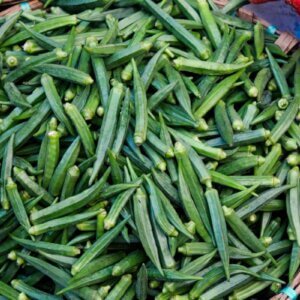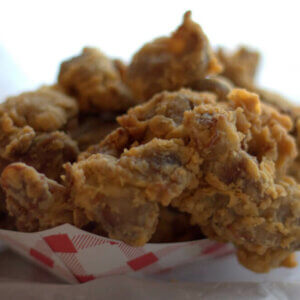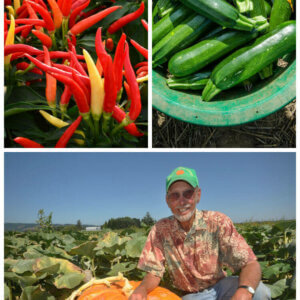Of all the herbs, basil is by far my favorite. The sweet, subtle aroma washes over me like velvet. And the taste? It certainly embellishes many of my savory dishes with flair.
The benefits of this luscious herb are multiple. And the best part is that it’s easy to grow, both indoors and out. Consequently, my summer garden hosts a large basil plot while my winter garden, indoors, hosts a large basil pot.

As much I love this plant, both growing and in my cooking pot, I hadn’t realized it was also very good for the human body. Studies suggest that it can be used as a curative for disease or as a restorative oil for the treatment of asthma, diabetes, or even stress.
Perhaps it’s most commonly known and used as a treatment for stomach cramps, vomiting, constipation, headache, and even as an antispasmodic for whooping cough.
Basil And Its Varieties
Of course, I’m mostly referring to sweet basil, the most common, most popular of basils. With its prolific bush full of large, dark green leaves, sweet basil lives up to its name in so many ways, not the least of which is its intoxicating aroma. Basil, commonly known as sweet basil, common basil, or even St. Josephwort, is also dubbed in France as ‘l’herbe royale’.
Originally from India, basil is a popular herb in European cooking, particularly Italian dishes. Its delightfully aromatic leaves reveal a wide variety of flavors from lemony, minty to cinnamon and even licorice. Even the leaves of the many different varieties are unique, the colors ranging from green to deep purple with smooth leaves or even crinkled leaves.
https://www.instagram.com/p/BdqOQNaH6_T/?tagged=sweetbasil
There is a wide range of basil varieties. There’s dark opal or purple basil, lettuce leaf basil, Thai basil, lemon basil, licorice basil, cinnamon basil, French basil, American basil, Egyptian basil and so many others. There is even a Christmas basil.
Dark Opal Basil
https://www.instagram.com/p/BZgQ1UFglNE/?tagged=darkopalbasil
Each basil is its own unique shape, size, and color. For example, the dark opal or purple basil, as you can imagine, is a very dark purple or dark burgundy leaf, almost black in color.
It grows about 18 inches tall with large leaves. In contrast to the sweet basil flavor, this basil has a stronger clove-like taste. It’s highly aromatic and very colorful when steeped in vinegar or oil.
Christmas Basil
https://www.instagram.com/p/BQvn_M8gIPV/?tagged=christmasbasil
Or how about a basil variety that adds a fruity flavor to salads and drinks? This 2-inch, glossy green-leafed variety that boasts purpose flowers is known as the Christmas basil. It grows bushy and tall: 16 to 20 inches.
Lemon Basil
https://www.instagram.com/p/BdB46nEHkqk/?tagged=lemonbasil
Another great salad additive is the lemon basil. It’s also good in fish dishes or even in a glass of iced tea. It is known to add a fresh lemony tang to pesto. The light green plants grow from 20 to 24 inches and boast white flowers.
Thai Basil
https://www.instagram.com/p/BdrI4A6lNht/?tagged=thaibasil
Thai basil tastes almost like anise and compliments coconut milk in Thai dishes. The plant grows to about 18 inches and is very bushy.
Cinnamon Basil
https://www.instagram.com/p/2-hquDPlYW/?tagged=cinnamonbasil
Cinnamon basil is very fragrant and has a spicy flavor which makes it an excellent choice for fruit salads and garnishes. The plant, which grows to about 25 inches, shares a color similar to the dark opal or purple basil with its dark purple stems and flowers, but small, glossy leaves.
Sweet Basil
https://www.instagram.com/p/BdmoNNdg4Va/?tagged=sweetbasil
With the many diverse varieties of basil, it’s surprising to realize that it’s actually a member of the mint family, another herb that has many diverse varieties. That’s a good thing. Most people know how easy it is to grow mint. The same goes for basil; all varieties of basil.
Of the many varieties of basil, the easiest to grow and most popular to use is, of course, the sweet basil. It grows well in hot, dry climates and will only grow as a perennial in climates that experience annual frosts and sub-zero temperatures.
Basil likes sunlight. Lots of it. Full sun will allow the plants to grow well, sturdier, and with less chance of disease. With ideal growing conditions and a continual harvesting strategy (continually pinching the leaves to coax it to become bushier), basils will not only do well, they will also grow substantially. For example, sweet basil can grow as tall as six feet but is more likely to grow to an average size of two to three feet.
https://www.instagram.com/p/BVzs26mlbqh/?tagged=growingbasil
It likes the large open space of an herb garden or even as a border plant for a flower garden. It also does well in pots on the patio or, in the colder months, inside on a window sill that receives plenty of sunlight.
Growing Tips for Basil
While basil does have the potential to be grown just about everywhere, indoors and out, this fragrant herb does have some requirements.
- Grow in full sun.
- Don’t overwater. Water underneath the leaves at the plant base to discourage fungi or mold to grow.
- Start the basil from seed in rich potting soil. From seed to plant, it usually takes 60 to 90 days.
- Pinch the flowers to promote bushier, oil-rich leaves.
- Pinch the leaves frequently (and use or dry the harvest for later use). This promotes a bushier plant and prevents the plant from going to seed, which in turn, makes the leaves bitter.
- Wash and dry harvested basil leaves. Tie and hang them in a clean, dry space. It takes two to three weeks to totally dry the herb leaves. Crumble and store in a sealed jar for later use. Dried basil leaves do lose some of the flavor.
- Wash and dry harvested basil leaves. Layer between paper towels and seal in a plastic bag or container. Freeze and remove as needed. Frozen basil leaves retain more flavor than dried basil leaves.
- Basil grows well next to tomato plants but also does well in its own portion of an herb garden or as an ornamental border for a flower garden.
- Basil grows well in containers. Make sure each plant has at least a 12-inch pot. Once again, lots of sun and water at the base of the plant is key.
- Since basil loves the sun and loves heat, don’t take it outdoors, either in pots or to plant in the garden, until the temperatures are suitable: at least 70°F in the day and no lower than 50°F at night.
- Plant in a rich, well-drained soil to promote a healthy plant and don’t let it get too dry. As much as basil loves the sun, it doesn’t like to be kept dry.
- Organic fertilizer may be added to the soil if needed. But use sparingly, as a too organically rich soil might promote a healthier, bushier plant, it might also affect the oil content of the leaves as well as the aroma and taste.
- Don’t use or plant in highly acidic soil. Only use slightly acidic or neutral soil, in the pH level between 5.5 and 7.5.
- In the garden, space the plants at least 10 inches apart, as the plant does grow large and bushy.
Look Out For Disease
Like other plants, basil attracts certain parasites, fungi, and molds. Earwigs will devour the plant in less than a day of planting.
https://www.instagram.com/p/BJyMqYKACsz/?tagged=basildisease
A soapy water solution to spray the leaves (top and bottom) will keep the earwig and inch-worm damage to a minimum. Avoid too much moisture to discourage fungi and molds from taking over.
And water carefully at the base of the plant to avoid getting the leaves wet as the dryer the leaves, the less likely for fungi and molds to appear.
Basil flowers are very popular to bees. This is definitely a bonus. However, even though the bees enjoy the nectar of basil flowers, these flowers reduce the foliage (leaves) growth and the oil content in the leaves. And since the leaves are the useable part of the herb, growers want to frequently pinch off the flowers to allow for a bushier and tastier plant.
Cooking With Basil
Basil, in any of its varieties, is best when used fresh off the plant. However, it does dry well. Wash and hang in bunches, upside down, in a kitchen window and the aromas of the herb will permeate the kitchen area for days.
While some of the Basil varieties are better in certain foods, sweet basil works well with just about any dish. It adds an interesting flavor, not quite sweet and certainly never sour.
https://www.instagram.com/p/4ag2f6Qil8/?tagged=cookingwithbasil
In tomato dishes, sweet basil cuts down on the acidity of the tomato. I enjoy using sweet basil on chicken dishes, in soups, in herb breads and biscuits, and in rice dishes. The list of possibilities is endless. Experiment and enjoy the endless possibilities of sweet basil, or any of the other varieties of basil. It’s always fun to experiment.
As an homage to my favorite herb, I’m including some of my favorite recipes that feature basil, as well as a basil curative, that’s especially effective on coughs! What are your favorite recipes that feature basil? Let us know in the comments.
Zucchini Shrimp Casserole
Ingredients
- 2 large zucchini, sliced thin
- 4 medium-sized mushrooms, sliced thin
- ¼ c. fresh chives, finely chopped
- 1 clove garlic, minced
- 1 tsp. fresh basil, stems removed and finely chopped
- ½ tsp. sea salt
- ¼ tsp. black pepper
- 1½ c. tomatoes, seeded and chopped fine
- 1 c. cooked salad shrimp, washed and drained
- 1 slice of basic white bread, crumbled
- 1 c. goat milk feta cheese, crumbled
- 1 c. goat milk cheddar cheese, shredded
Directions
- Lightly grease a medium-sized casserole with extra light olive oil.
- Layer prepared casserole with sliced zucchini and sliced mushrooms.
- Sprinkle with chives, garlic, basil, sea salt and black pepper.
- Layer tomatoes over top of the zucchini mixture and then layer shrimp on top of the tomatoes.
- Sprinkle crumbled bread, feta cheese, and cheddar cheese over top.
- Cover with foil and bake in a preheated 375°F oven for thirty minutes. Serves four.
Toasted Cheese Bruschetta
Ingredients
- 4 large tomatoes, chopped fine
- 3 cloves garlic, minced
- ¼ c. extra light olive oil
- 2 tbsp. balsamic vinegar
- ¼ c. fresh basil, stems removed and leaves chopped fine
- 1 French baguette, cut in half and sliced lengthwise
- 2 c. goat mozzarella cheese or goat cheddar cheese, shredded; goat or sheep feta cheese crumbled also works well
Directions
- In a medium-sized bowl, combine the first five ingredients. Toss lightly and let sit for about 10 minutes. They can also be kept in an airtight container in the refrigerator for up to one week.
- Lay French baguette pieces open side up, on a large flat casserole or baking sheet.
- Spread tomato mixture evenly over top of each baguette piece.
- Sprinkle with cheese of your choice.
- Place under the broiler for 5-10 minutes or until toasty to individual taste. Makes four servings.
Eggplant Casserole
Ingredients
- 1 small eggplant, peeled and sliced
- 4 medium-sized mushrooms, washed and sliced
- ½ tsp. fresh basil, chopped
- ½ tsp. fresh parsley, chopped
- ½ tsp. fresh rosemary, chopped
- 1 tsp. garlic powder
- 1 c. goat milk feta cheese, crumbled
- 4 eggs
- ½ tsp. sea salt
- ¼ tsp. black pepper
Directions
- Lightly grease a medium-sized casserole with extra light olive oil.
- Place sliced eggplant evenly over the bottom.
- Top with sliced mushrooms, herbs, garlic powder, and feta cheese.
- In a small bowl, beat eggs, sea salt and pepper until frothy. Pour evenly over top of eggplant mixture.
- Bake in a preheated 375°F oven for 45 minutes. Let stand on top of the stove for 10 minutes and then serve. Makes four servings.
Curative Basil Mixture
Ingredients
- 1 tsp. dried basil
- ½ c. boiling water
- 1 tsp. honey (optional)
Directions
- Steep basil in water for 10 minutes.
- Take 1 to 1½ cups a day, a mouthful at a time.
- Add 1 teaspoon liquid honey to sweeten the concoction, especially if taking the basil curative for a cough.
Basil In History And Folklore
Basil is definitely one of those multi-purpose miracle herbs. An herb that originated in India, basil boasts a number of rituals surrounding it. Jewish folklore suggests that basil builds one’s strength during periods of fasting.
Other legends suggest that basil is an herb of love. On the feast of Saint Anthony (June 13), Portuguese men might present a pot of basil, along with a poem, to their sweethearts, while pots of basil would be used as decoration.
https://www.instagram.com/p/BdsToPUlDqc/?tagged=basil
There are other legends that contradict this positive attribute to the herb basil. Some European folklore suggests that basil is a symbol of Satan. And some African legends insist that basil can protect a person against scorpion attacks.
On the other hand, a French physician by the name of Hilarius argued that smelling too much basil would breed scorpions in the brain. A 17th-century English botanist, Nicholas Culpeper, seemed to agree with Hilarius.
There are plenty of legends and myths surrounding every herb. Basil is not alone in this regard. In fact, certain eras in history record that the study of herbs, the use of herbs, was considered nothing more than witchcraft, and people were burned at the stake for using certain herbs in healing potions.









































Too much knowledge on Bssil.Many thanks to provide such very good truth.
I love Basil! I am currently growing them in my garden but I live somewhere cold and they don’t like it that much. Hopefully I can enjoy fresh Basil in my cooking soon! -Nebrija
-Nebrija